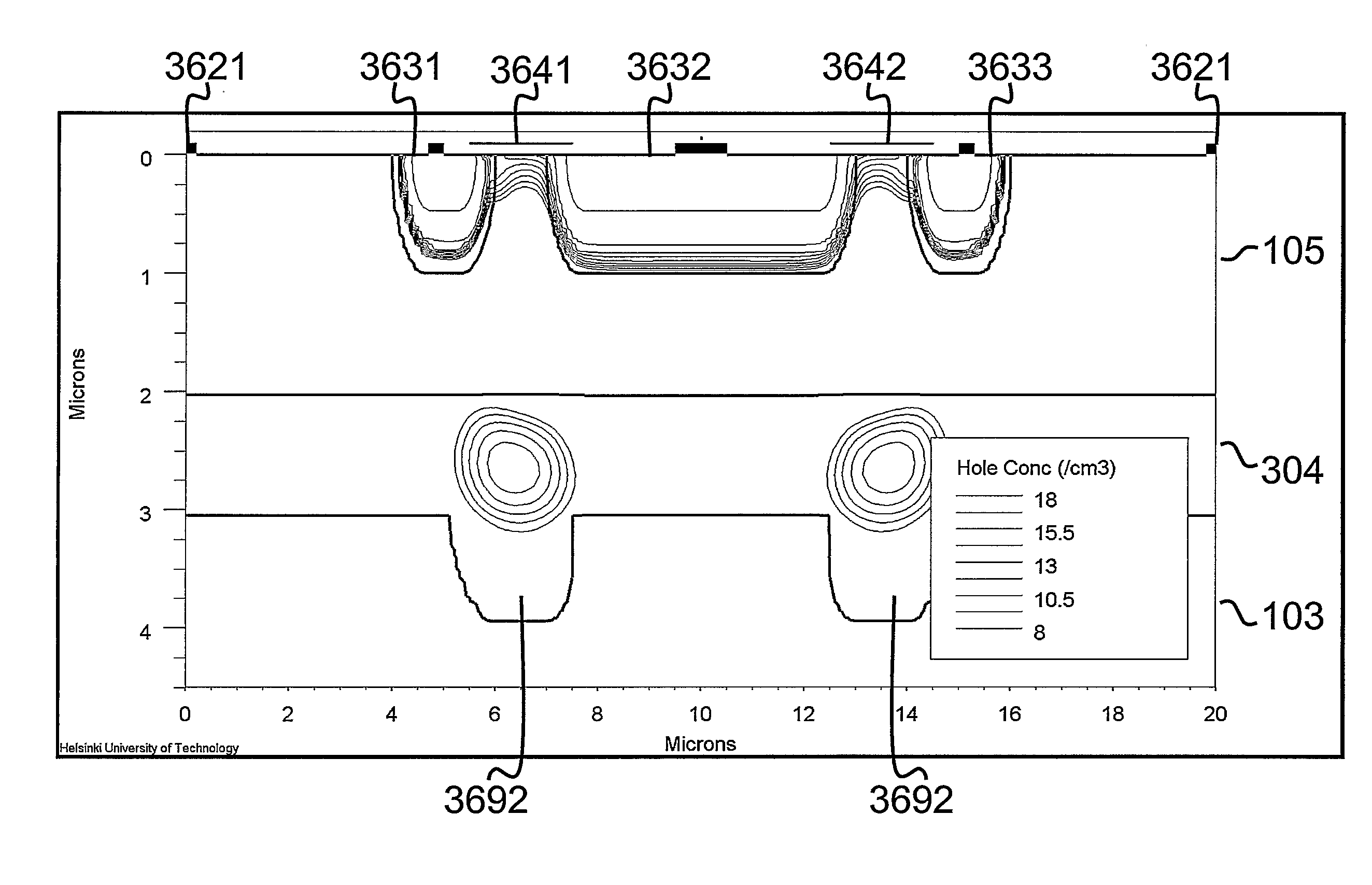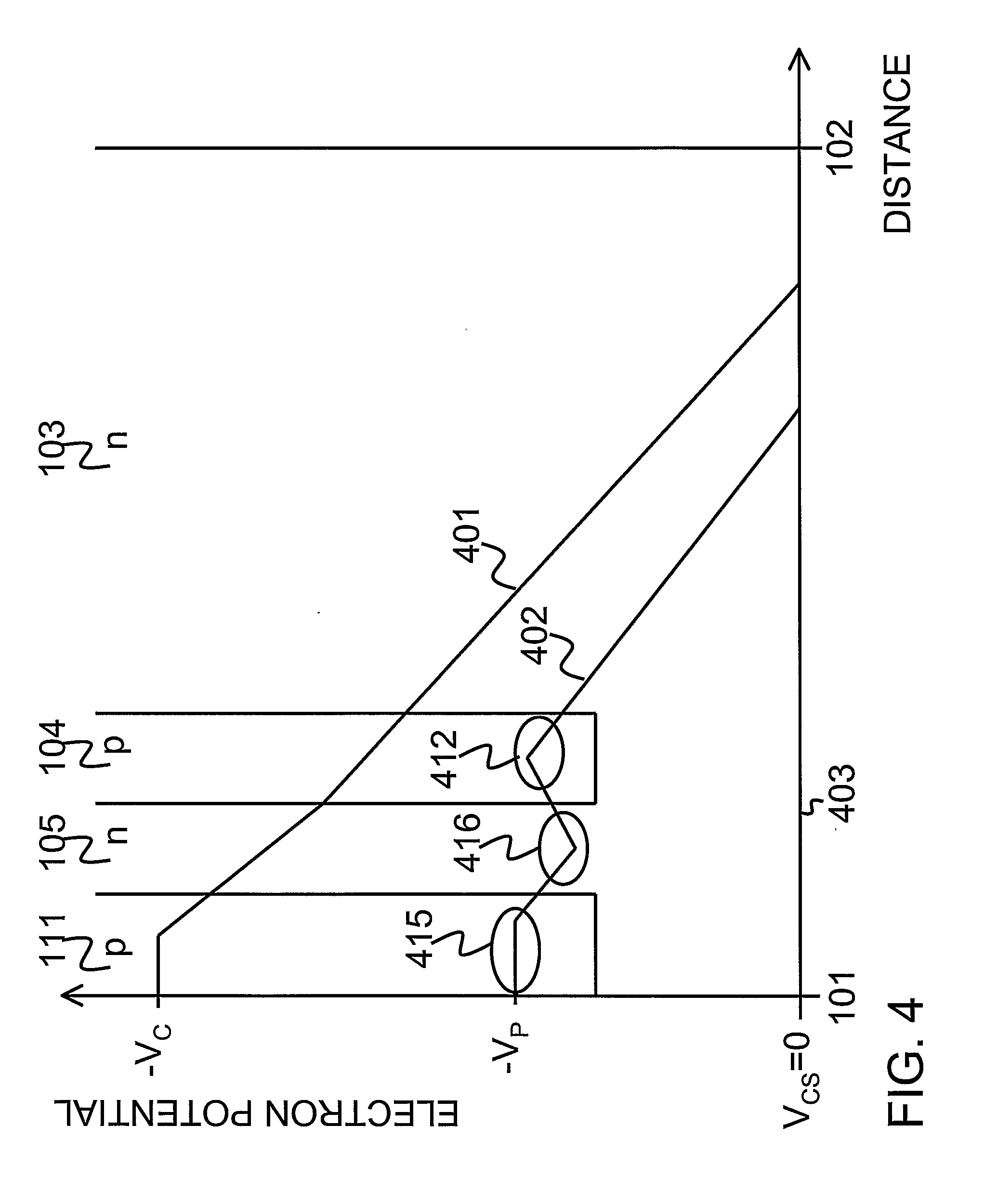Semiconductor Radiation Detector Optimized for Detecting Visible Light
a radiation detector and semiconductor technology, applied in the field of semiconductor radiation detectors, can solve the problems of poor blue response of front illuminated novel mig detectors, and achieve the effects of improving the blue response of front illuminated devices, reducing the number of secondary charges, and reducing the size of the active area
- Summary
- Abstract
- Description
- Claims
- Application Information
AI Technical Summary
Benefits of technology
Problems solved by technology
Method used
Image
Examples
Embodiment Construction
[0083]FIG. 1 is a schematic cross section of a radiation detector, which is preferably thin and back illuminated. The detector has a front surface 101 which is upwards in the drawing. The back surface 102 of the detector, through which radiation enters the detector, is downwards in the drawing. On the back surface there may be an optional antireflection or scintillator coating. The bulk layer 103 of the detector is made of semiconductor material of a first conductivity type. The first and second conductivity types or vice versa refer here to positively and negatively doped semiconductors, with an excess of positive and negative charges respectively. On the front side of the detector from the back surface towards the front surface there is first a layer 104 of the second conductivity type, which is in the following referred to as the modified internal gate (MIG) layer. In the device of FIG. 1 there are gaps in the MIG layer. In front of the MIG layer 104 there is again a layer 105 of...
PUM
 Login to View More
Login to View More Abstract
Description
Claims
Application Information
 Login to View More
Login to View More - R&D
- Intellectual Property
- Life Sciences
- Materials
- Tech Scout
- Unparalleled Data Quality
- Higher Quality Content
- 60% Fewer Hallucinations
Browse by: Latest US Patents, China's latest patents, Technical Efficacy Thesaurus, Application Domain, Technology Topic, Popular Technical Reports.
© 2025 PatSnap. All rights reserved.Legal|Privacy policy|Modern Slavery Act Transparency Statement|Sitemap|About US| Contact US: help@patsnap.com



